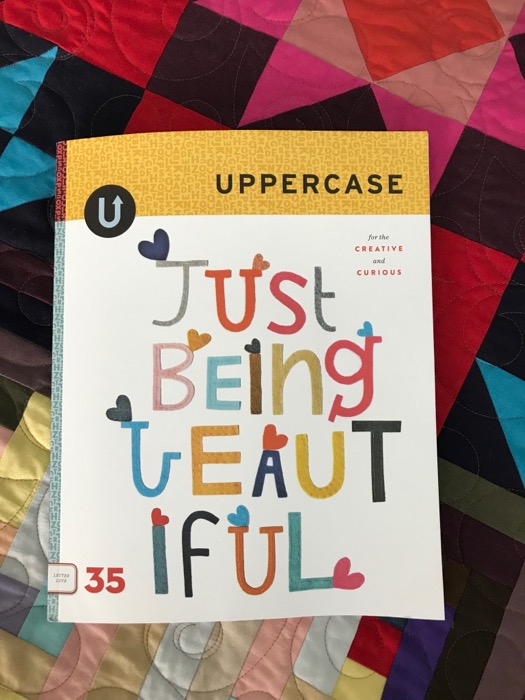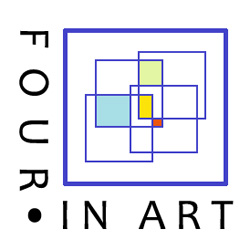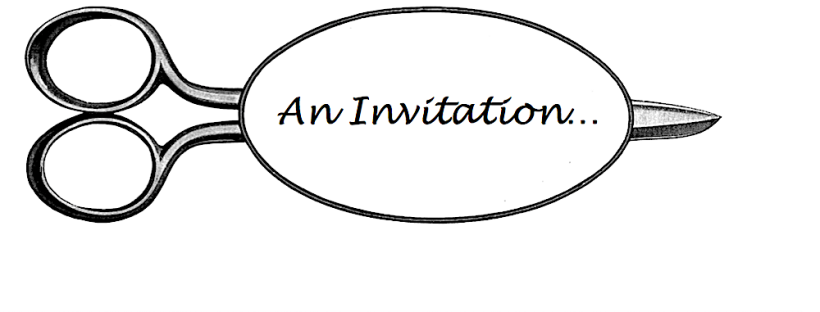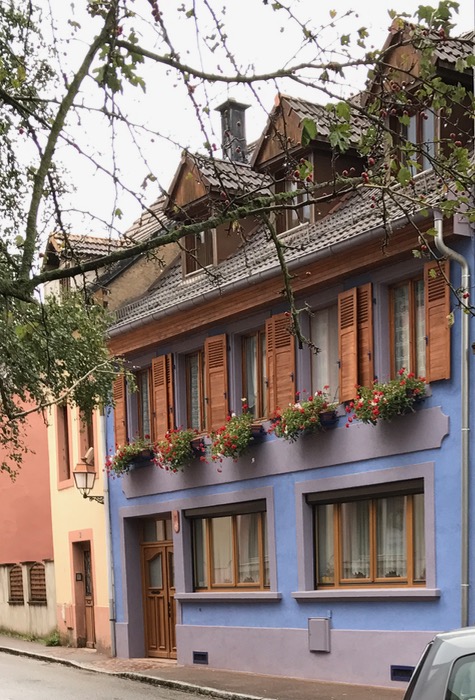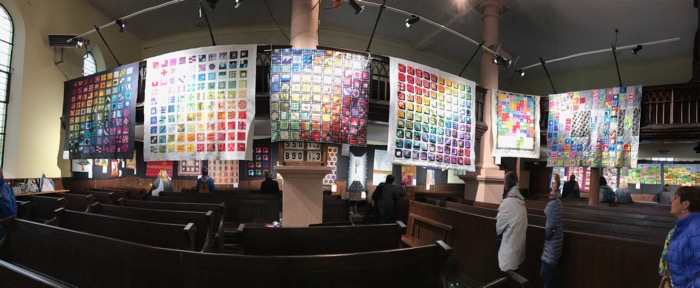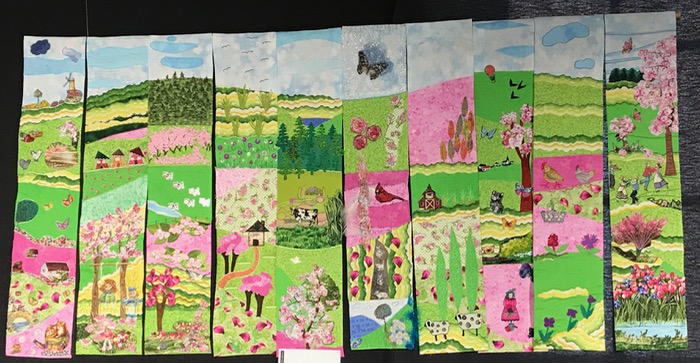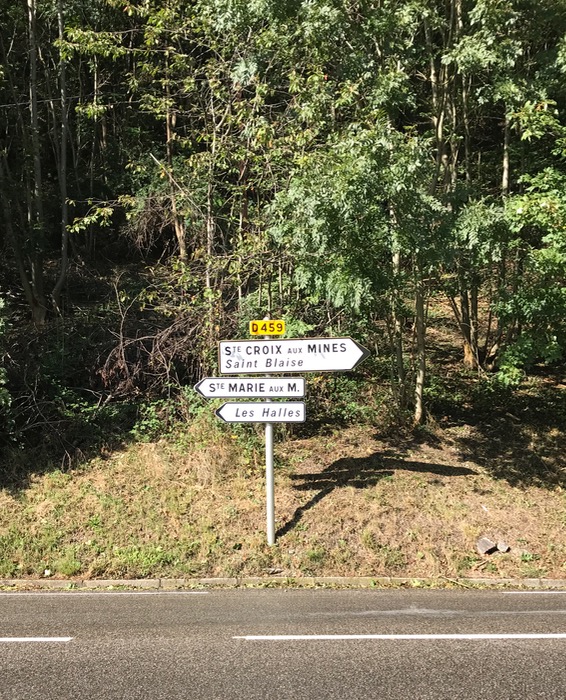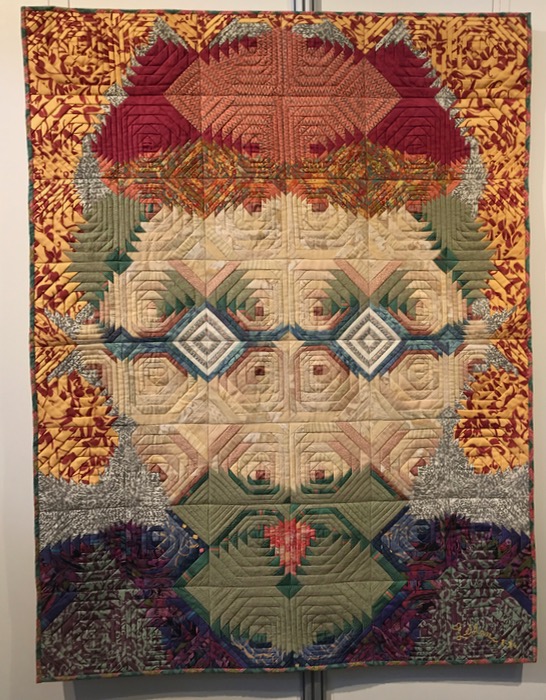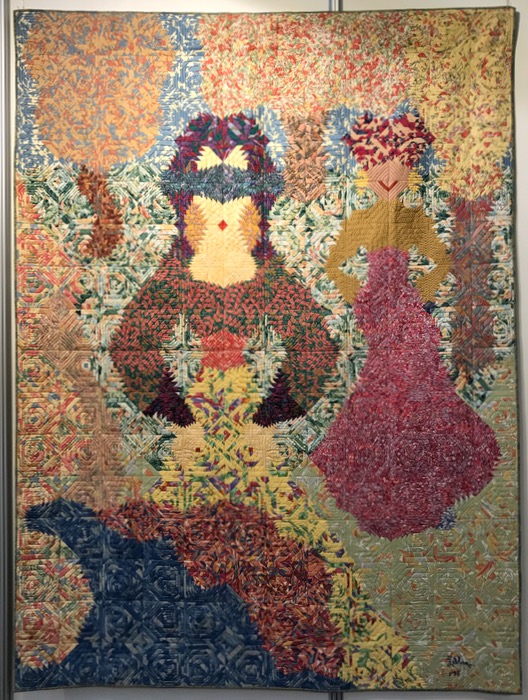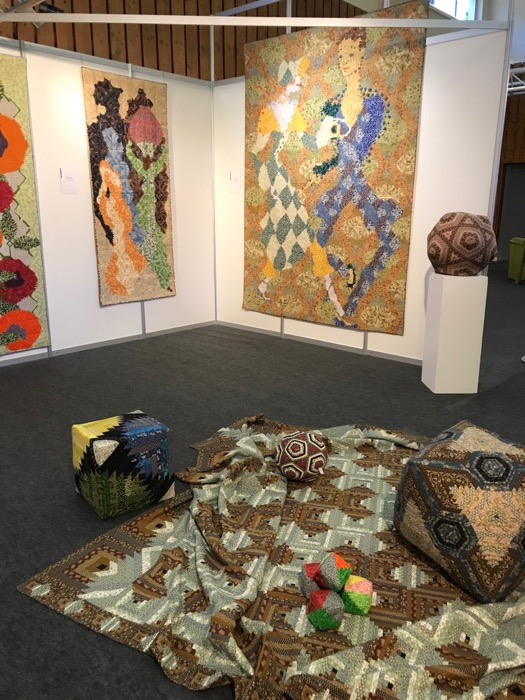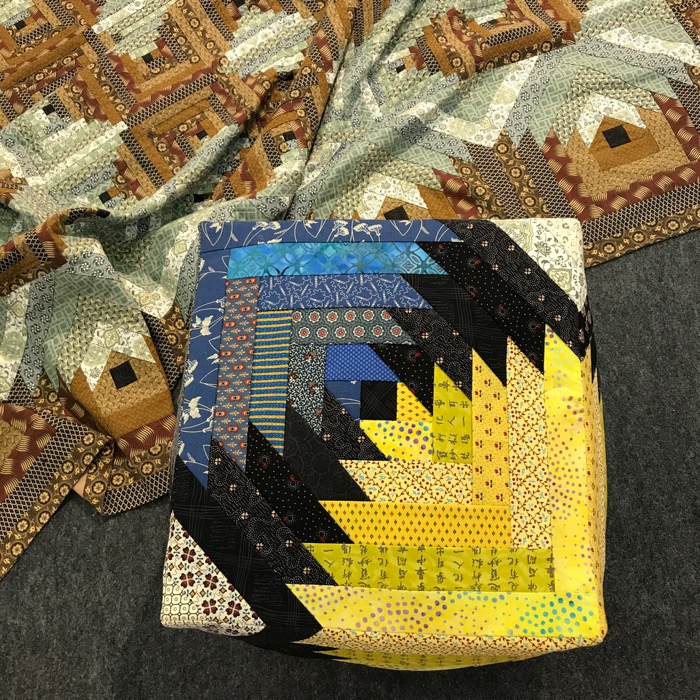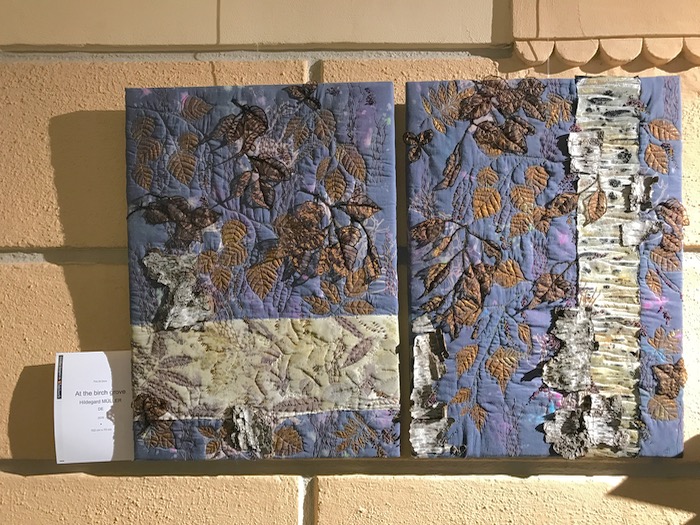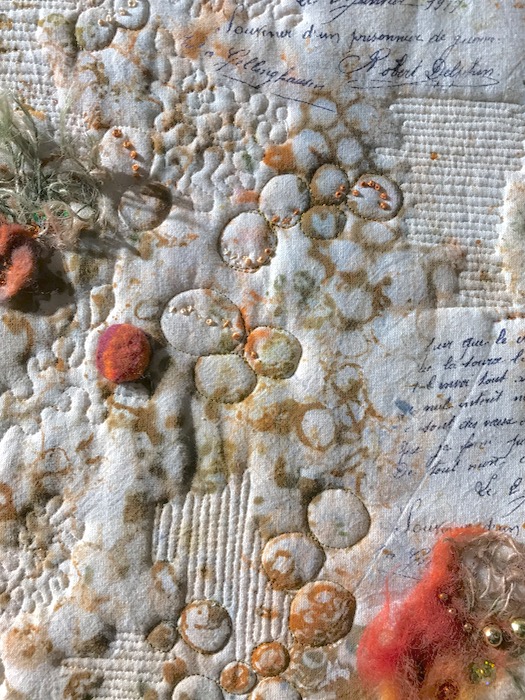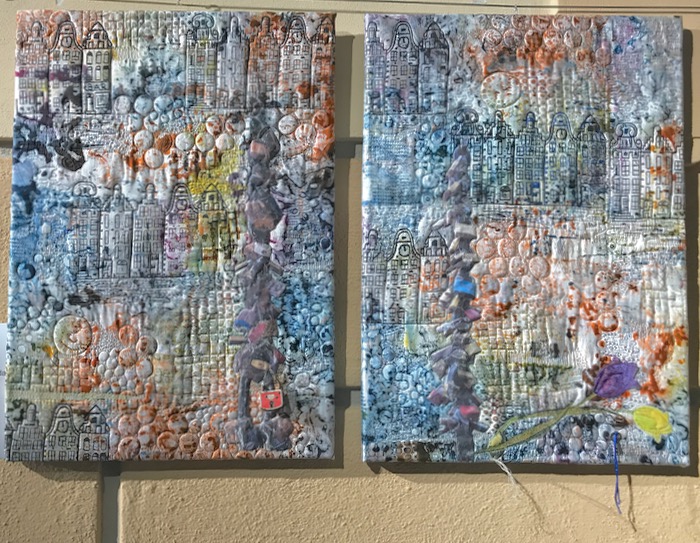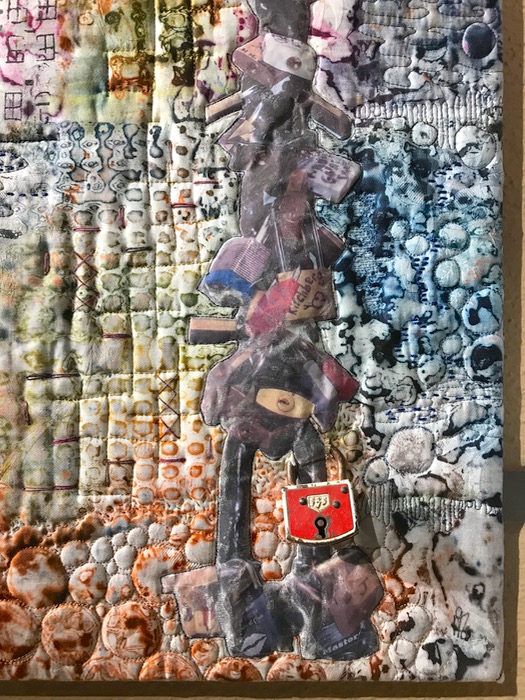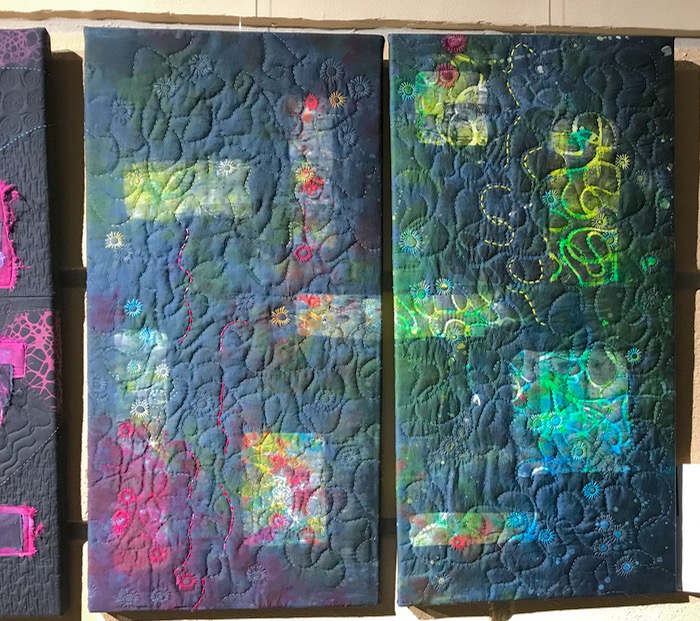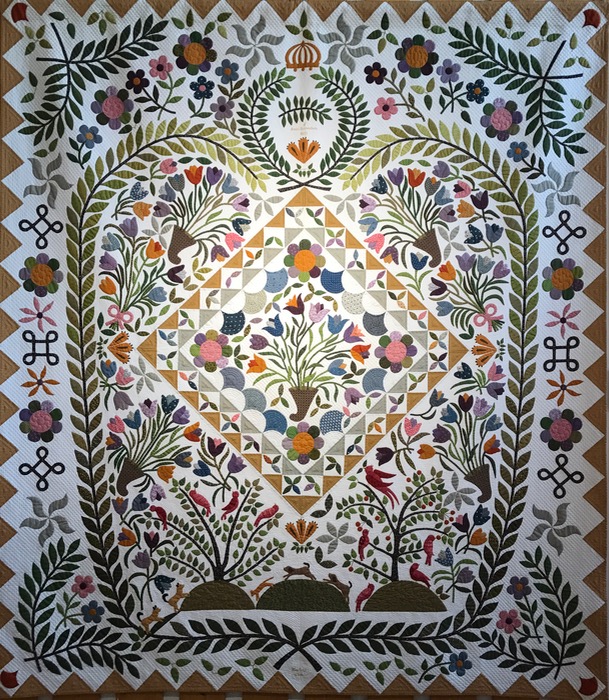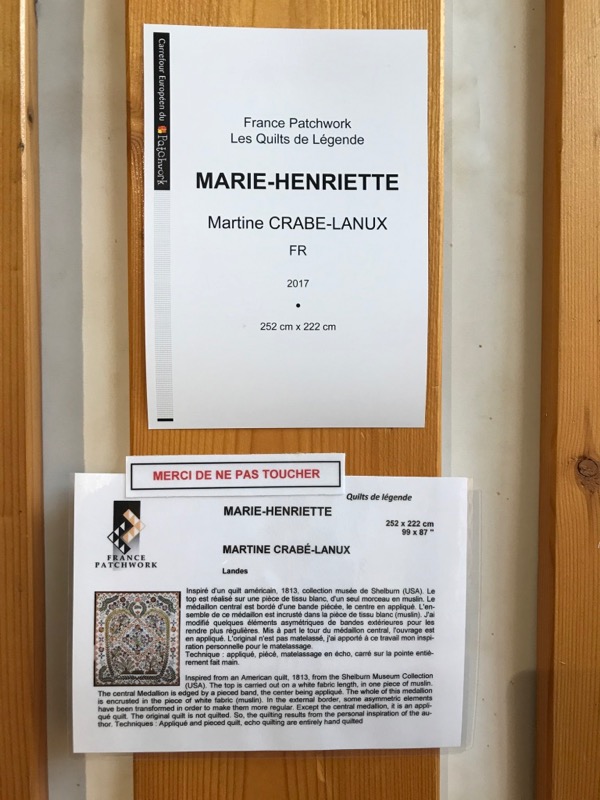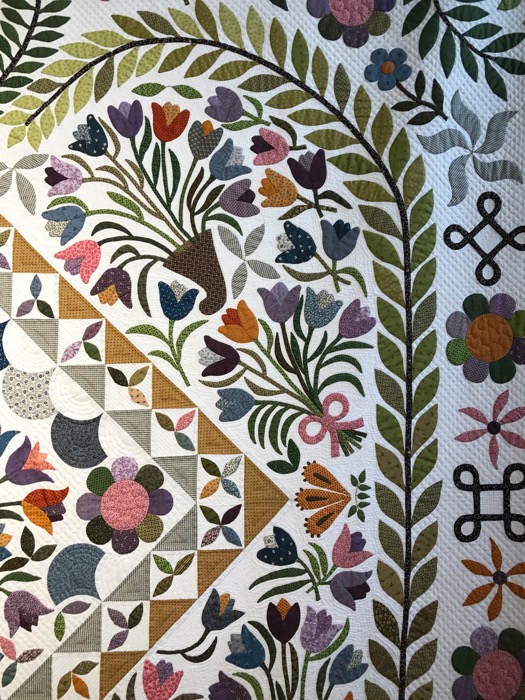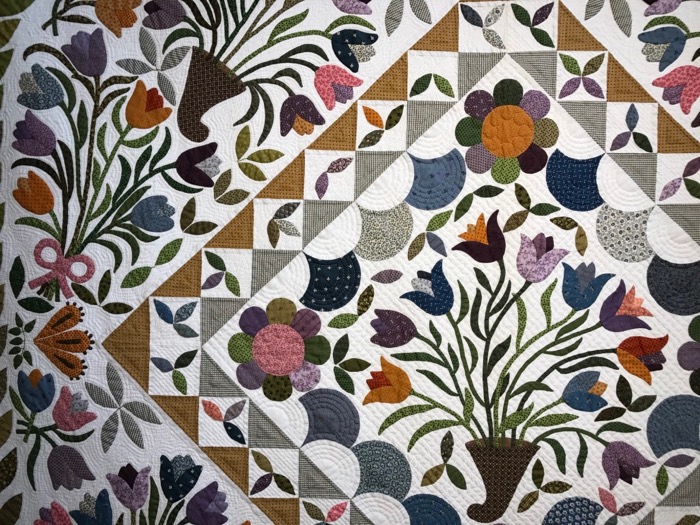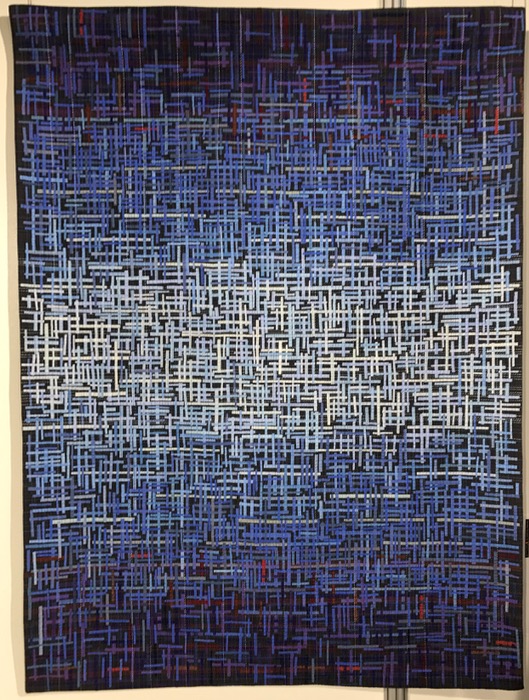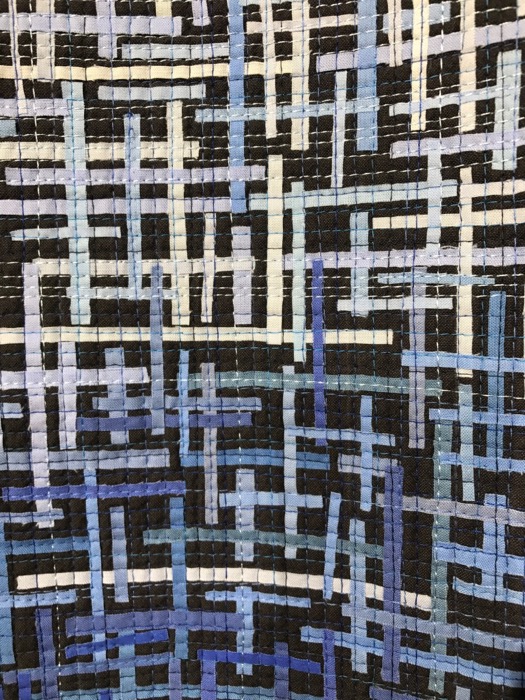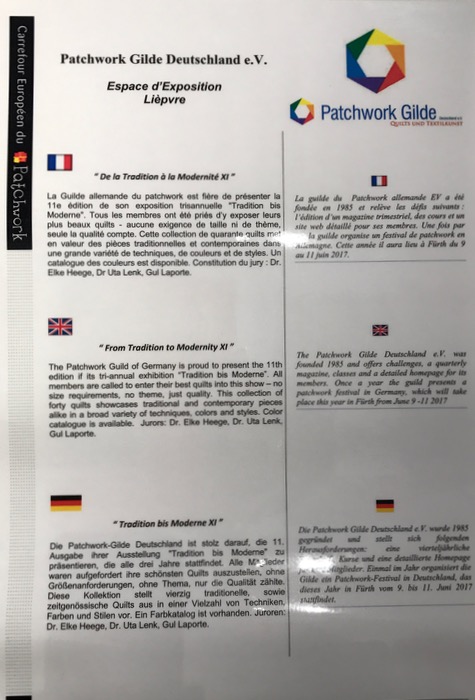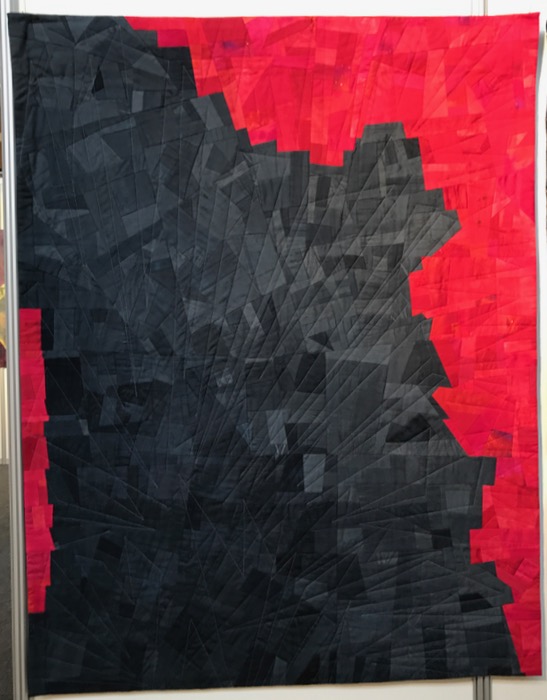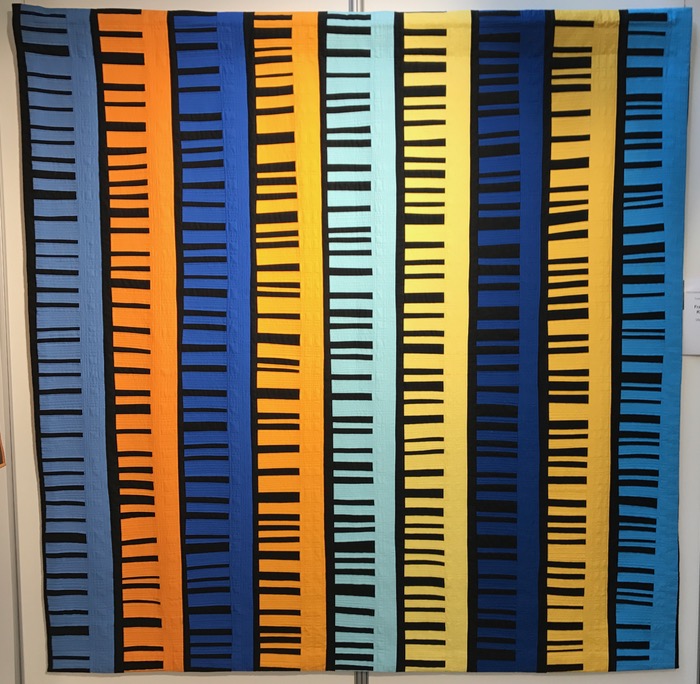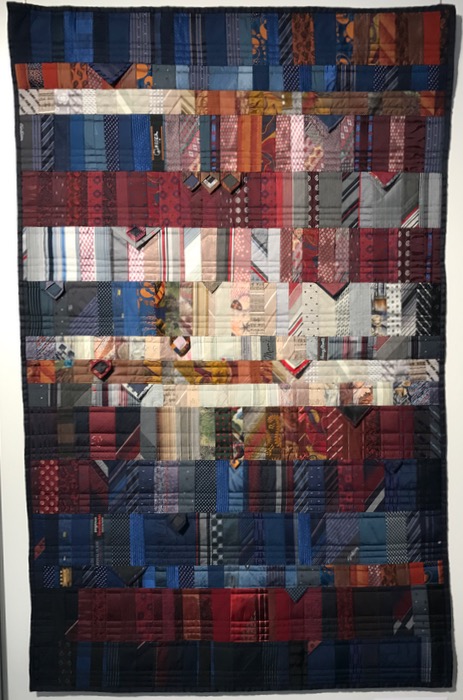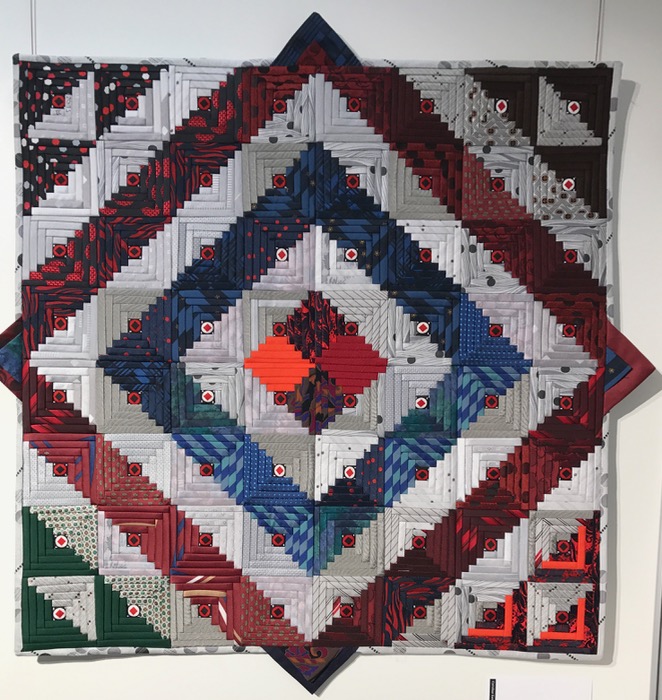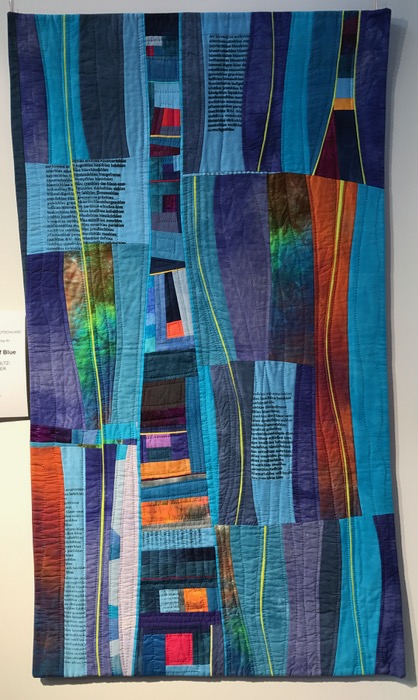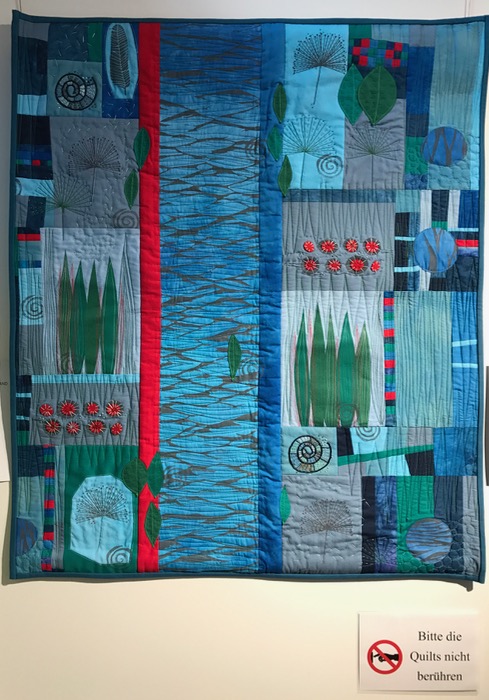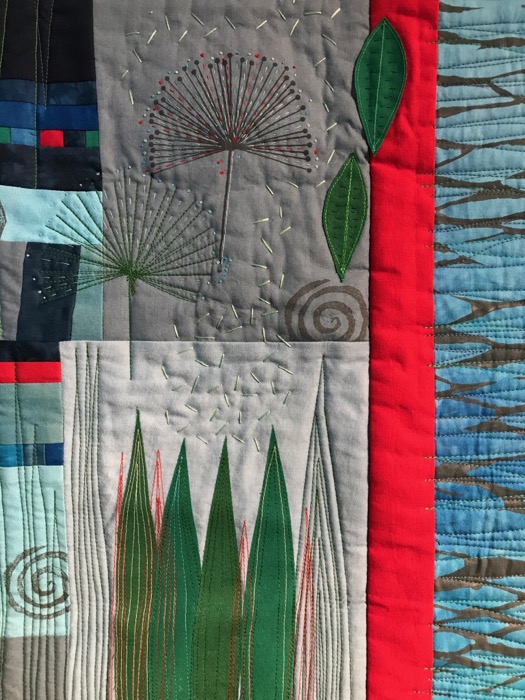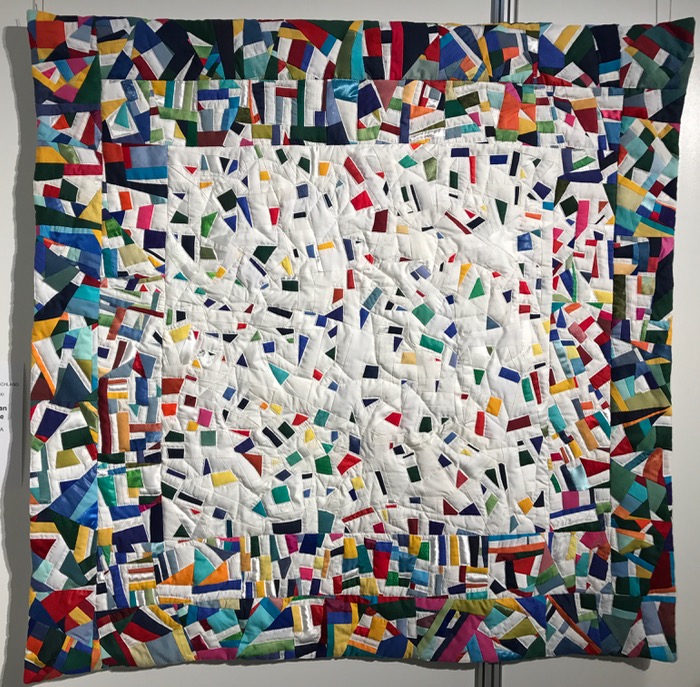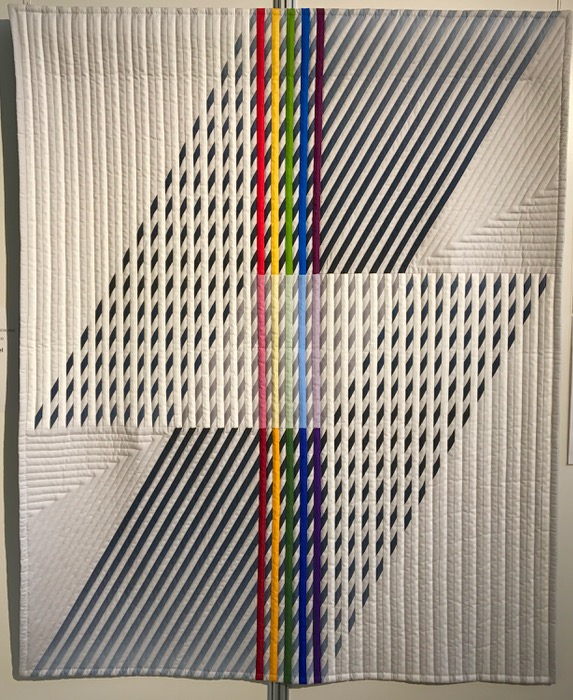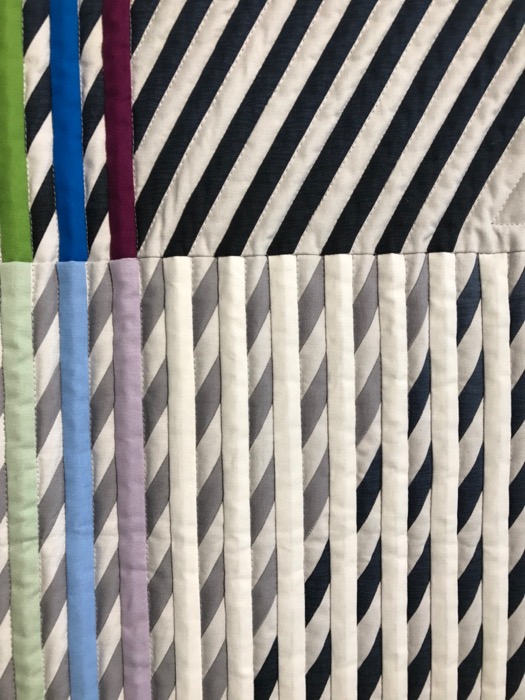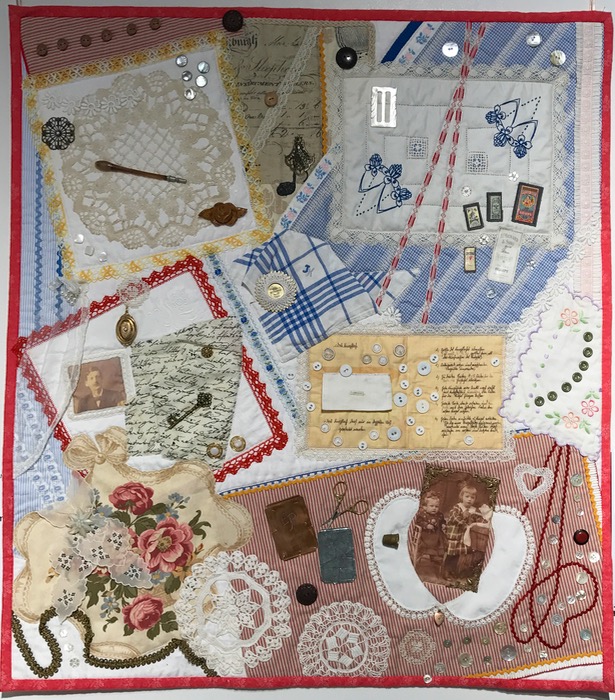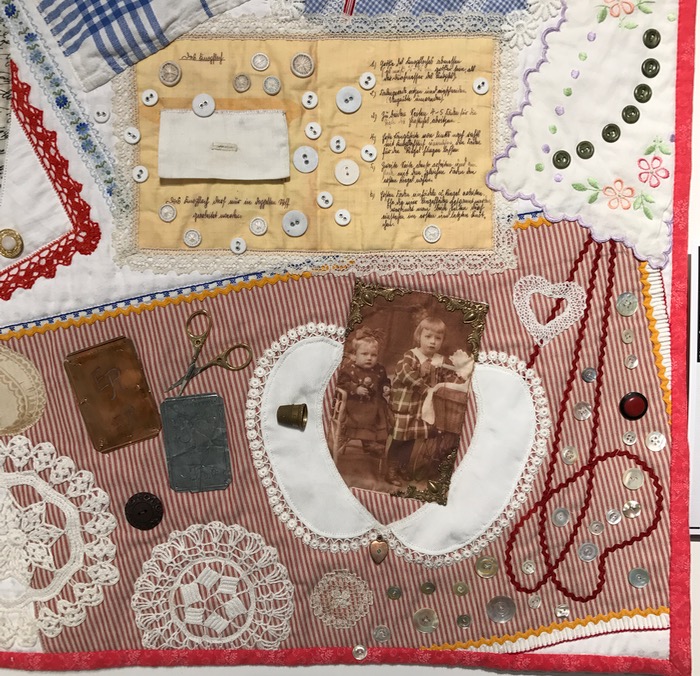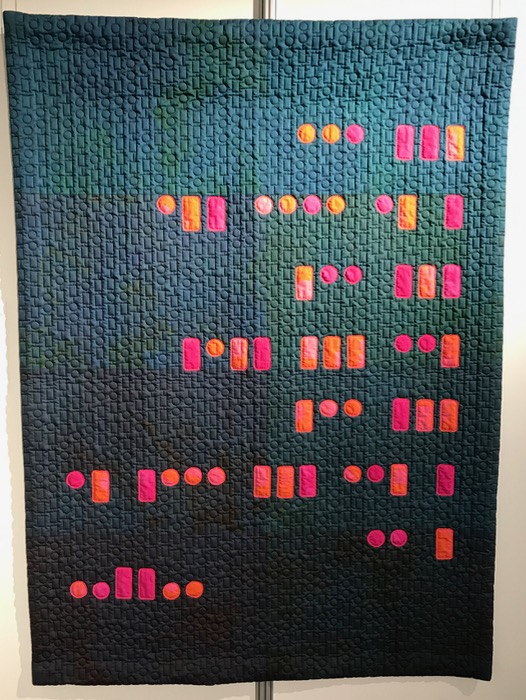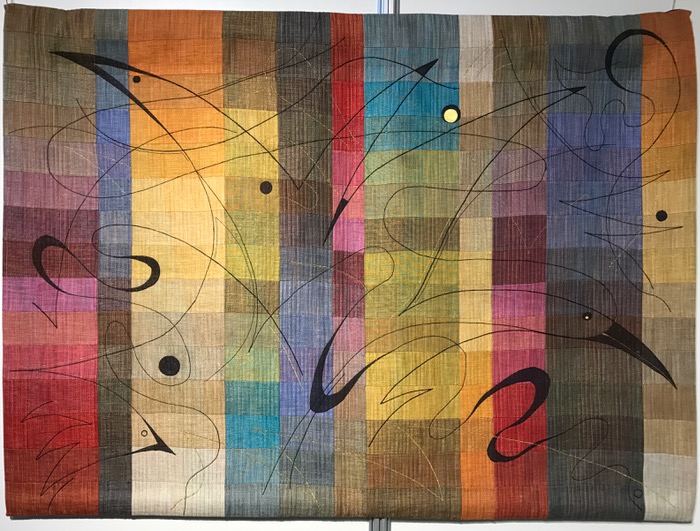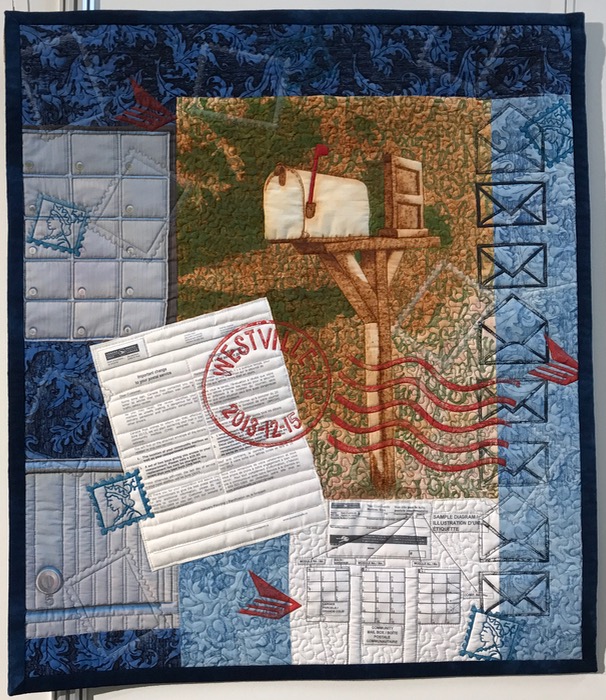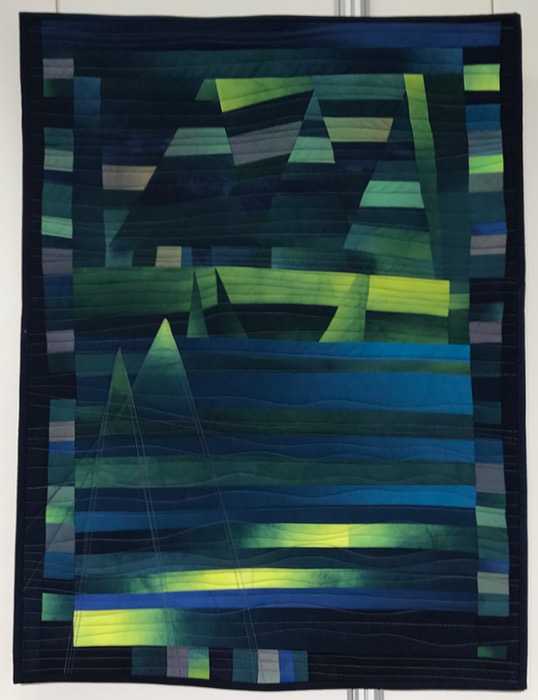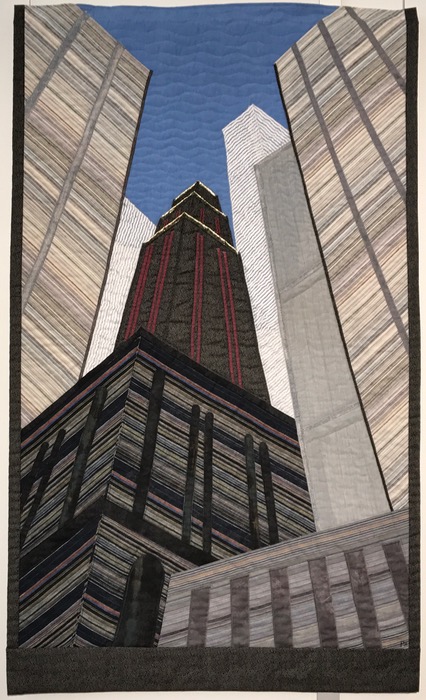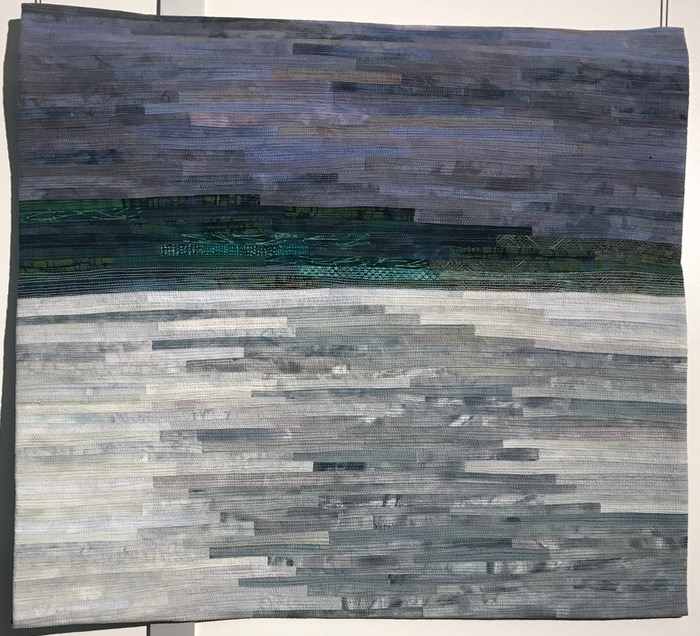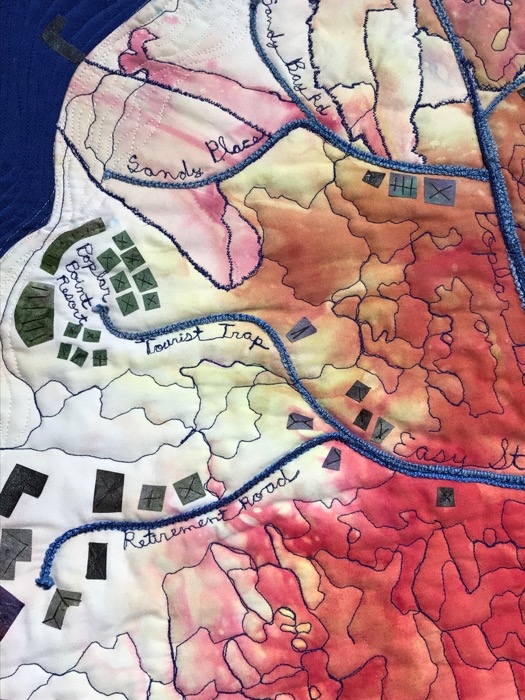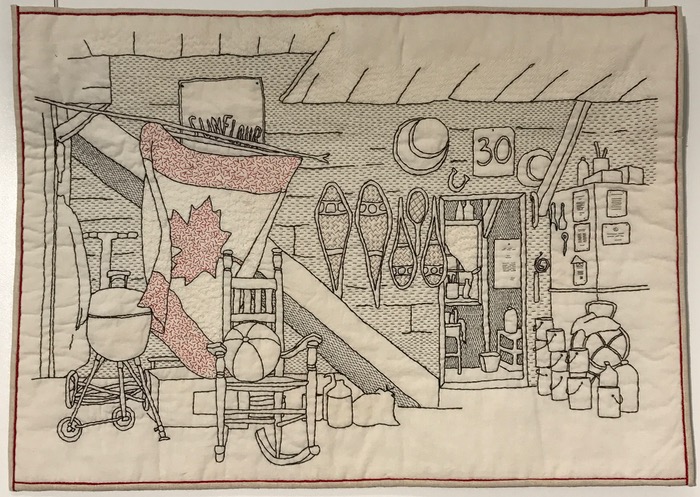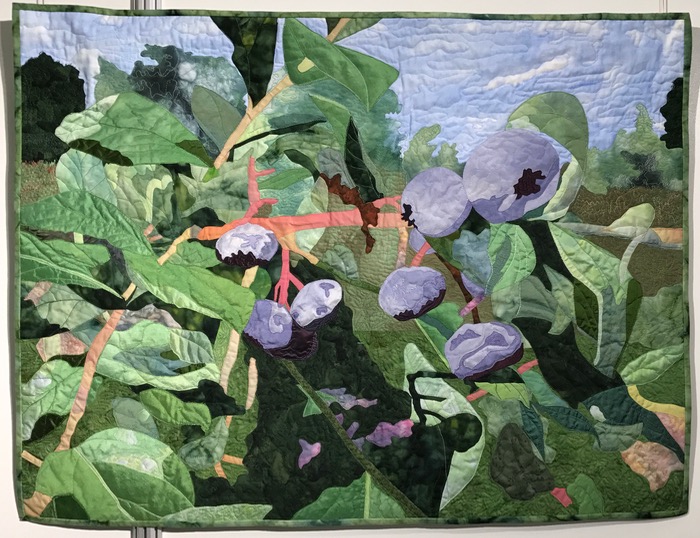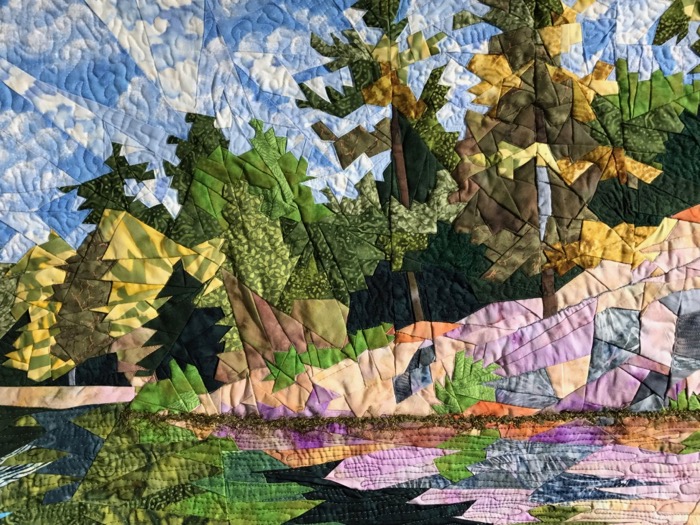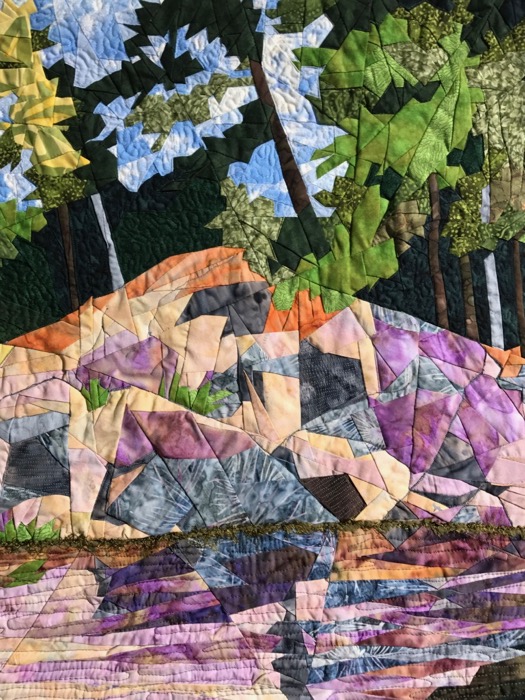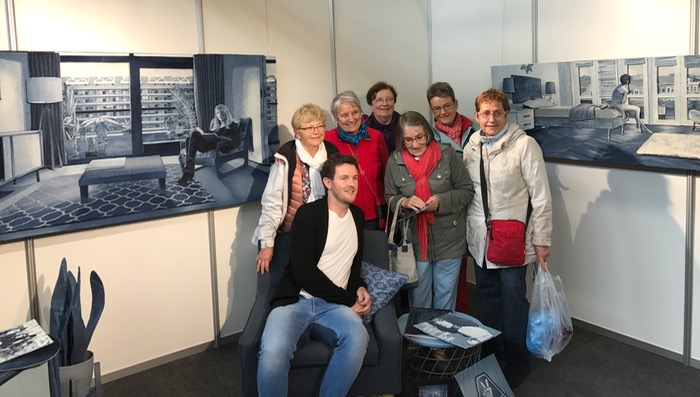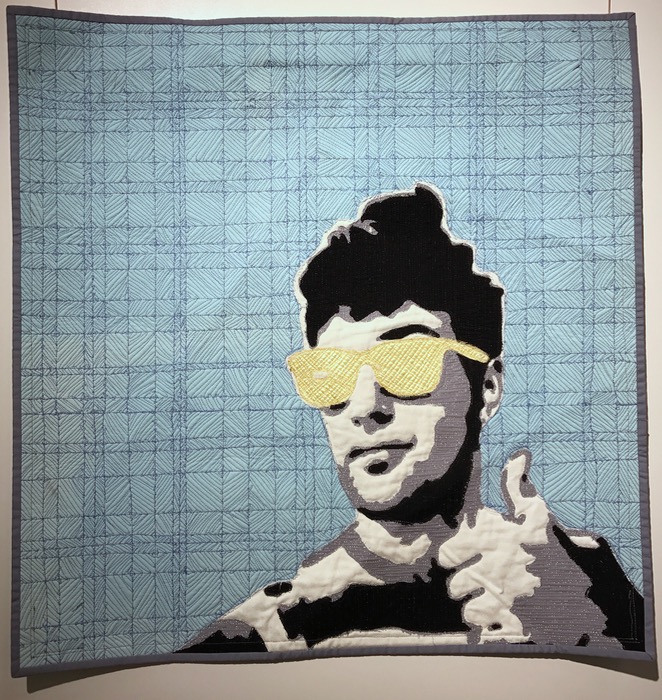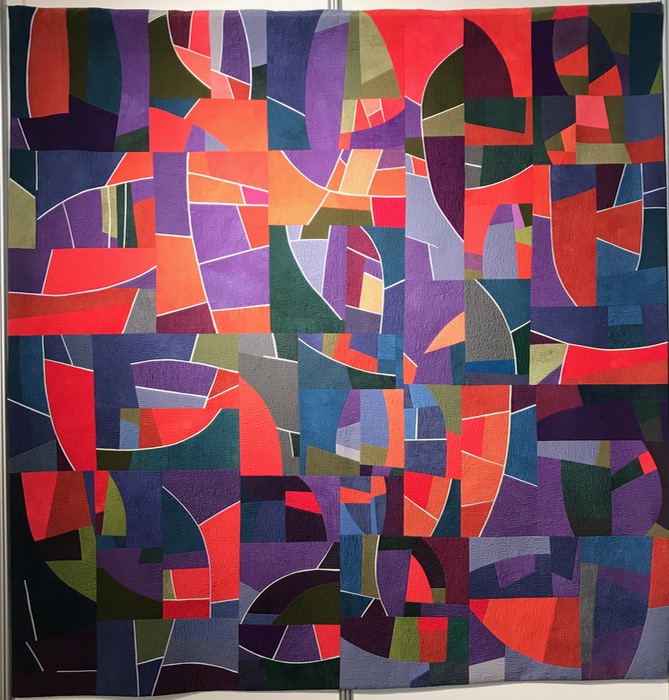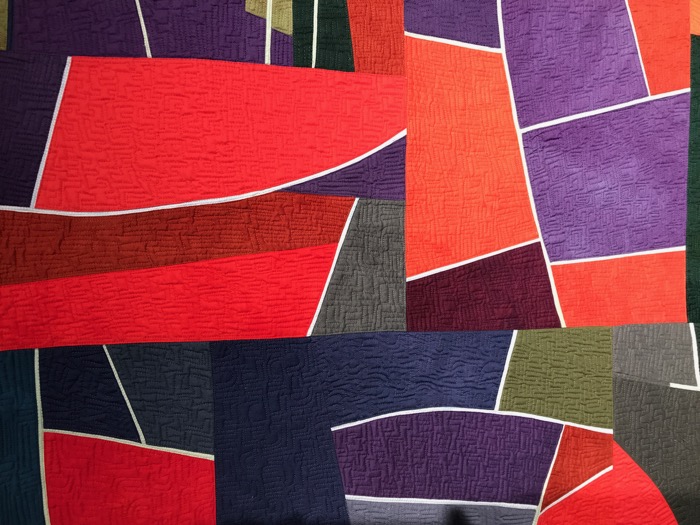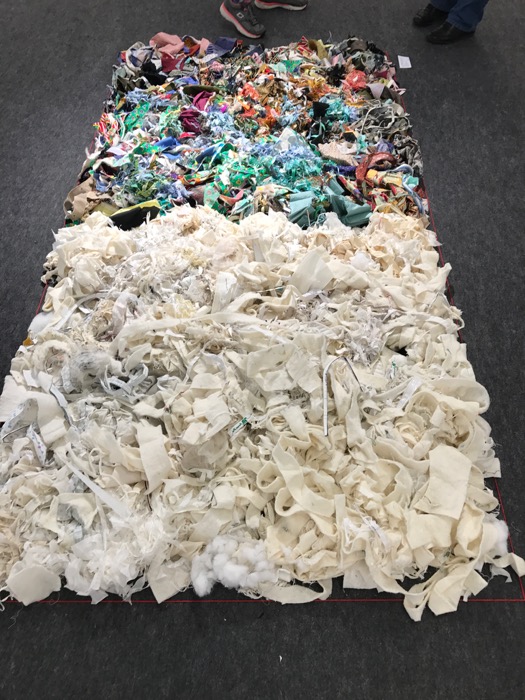This is the post where I reveal all my beauty secrets. Kidding.
This is the post where I tell you how I made my Four-in-Art quilt, showing a technique I’d read about this technique somewhere, but that crazed-woman-at-the-computer didn’t bookmark it or file it away neatly. So I had to wing it, which is okay.
First, cut yourself a square of black fabric. I used the wrong side of a fabric that I hoarded about 15 years ago, and I’m still trying to get rid of it. (It’s a great fabric, really.) Then get yourself some Steam-A-Seam II, the fusible applique stuff that will be sticky when you lift up the transfer paper, after you’ve ironed it on.
I did check to make sure that I adhered the non-release side of the Steam-A-Seam II, leaving the side that would release easily facing me.
Gather together some scraps in the colors you want to place on your background. Since I was doing the eclipse, I basically had three: yellow, black, blue. Throw in some related colors, just to keep it interesting. For me, that meant some lighter blues, and orange.
Pile up your color, then randomly cut through the fabrics, and then do it again. You need some bigger pieces (1-1/2″), but also lots of smaller pieces (1/2″).
I traced a circle on my paper, slightly off-center — because none of us saw that eclipse dead-center — and cut out a hole out of the paper backing.
I laid out my black scraps, making a loose circle. Then I tucked my yellow/orange sun flares behind the circle, pressing down with my fingers to make them adhere to that sticky surface.
Then I oopsed:
I went to the ironing board and ironed it all down. WRONG. While this seemed like a good idea, you know–to make sure all those pieces were not going to go anywhere — in reality it prevented me from lifting up the edges and tucking in more yellows, and the blues. So maybe if you can protect the edges of your design from the hot iron it might be a good idea? Or just wait until the end?

Then my son Matthew, who is an expert landscape photographer, put up pictures of the Milky Way on his Instagram, MattsClicks. This gave me to freedom to really add in color to the heavens, so I pulled a greater variety of blues (and some with purples) and started scattering them around, trying to keep a “street” of lighter blues to represent the Milky Way. (Thanks, Matt!)
 Add in your bits and pieces, filling up the background in a random, organic way.
Add in your bits and pieces, filling up the background in a random, organic way.
NOW go to the ironing board, lay your transfer paper over the design (the crackly sheet that came with your fusible), and press, lifting up and down, not sliding, until you think it’s adhered.
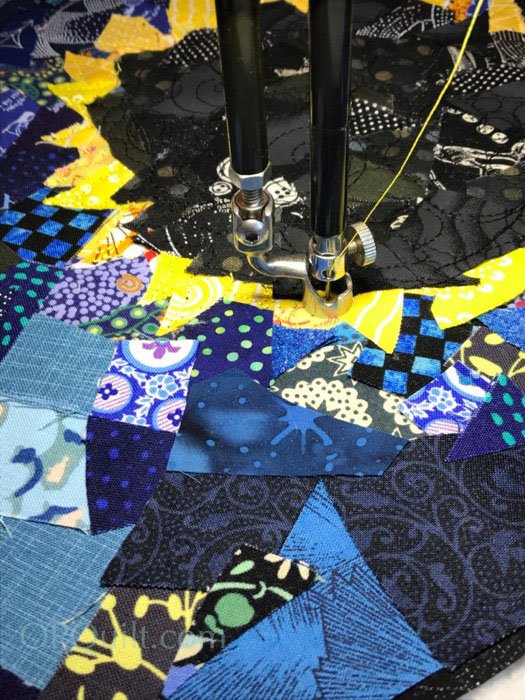
I used three different colors of thread, and just scribbled free-motion-quilted the pieces down. I did a series of circles in black in the moon, the followed the shapes for the solar flares, then a random loopy design in the heavens.
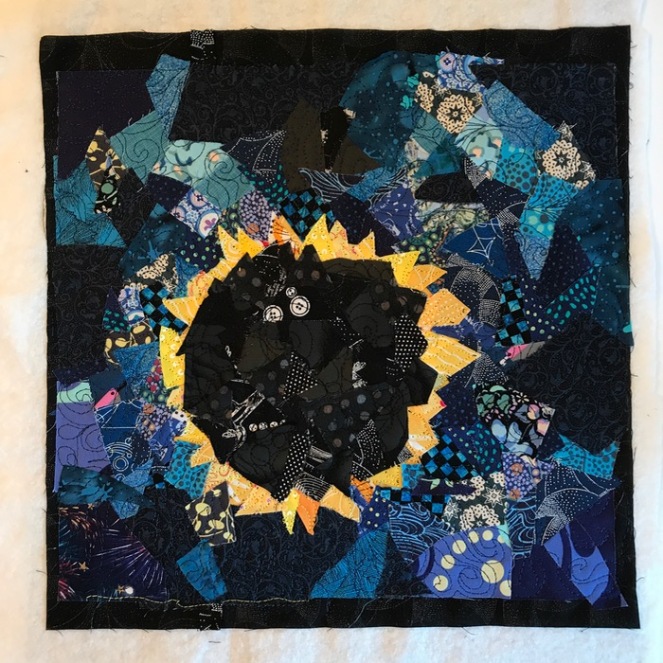 This is where I notice that the moon has two eyeballs staring right at me. And this is where I go get some more scraps, use a regular old-school glue stick and paste more fabric scraps over the eyeballs (you don’t see it in the first one, do you?). Quilt, again. And then I thought that the moon looked more like a black lump of coal than the moon (even though it does have a mountain-y horizon…it’s not THAT bumpy). More scraps glued on, more FMQ. I finished up by going in giant circle around the perimeter of the moon, to reinforce that Orb in the Sky thing.
This is where I notice that the moon has two eyeballs staring right at me. And this is where I go get some more scraps, use a regular old-school glue stick and paste more fabric scraps over the eyeballs (you don’t see it in the first one, do you?). Quilt, again. And then I thought that the moon looked more like a black lump of coal than the moon (even though it does have a mountain-y horizon…it’s not THAT bumpy). More scraps glued on, more FMQ. I finished up by going in giant circle around the perimeter of the moon, to reinforce that Orb in the Sky thing.
Well. Not quite. But that’s what my work table looked like after I trimmed it up, bound it, and made the label. I’m a total believer in a clean workspace at all times. I’m a total believer in a clean workspace at least once every couple of weeks. I mean, I’d like it to be all the time, but I create in small room, and I decided to adjust to the life I have.
Hope you’ve enjoyed the Deconstruction Post for the Final Four-in-Art Quilt. I probably won’t leave the art quilt in the dust, though, as it’s a quick way to make a quilt while trying out a new technique. Given that it is often smaller (most of mine were 12″ square), you can crank one out in a day, or an afternoon, if your design is not too complicated.
Thank you for coming along on this five-year journey.
~Elizabeth, of OPQuilt.com
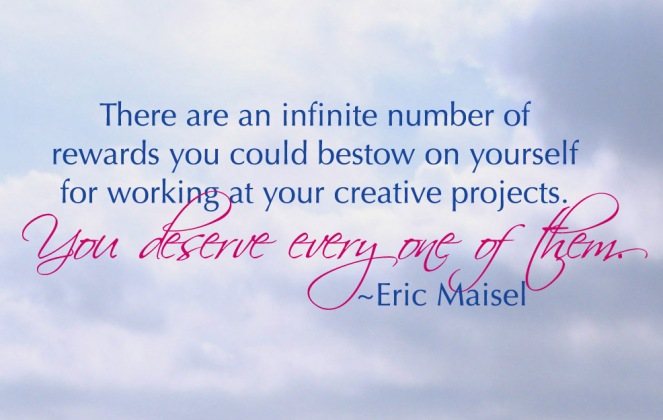







 Eclipse • Quilt #189
Eclipse • Quilt #189


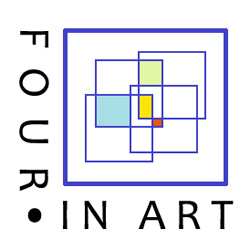

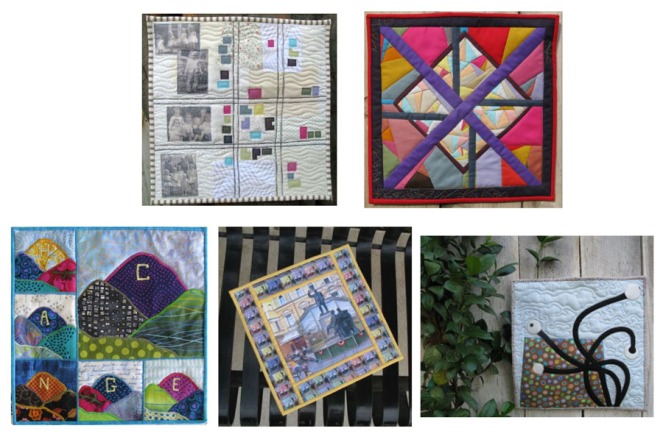 Year 2: Urban Quarterly Challenges (from upper left): Maps, Structure, Landmarks, Contrast, Light (we seem to like this topic).
Year 2: Urban Quarterly Challenges (from upper left): Maps, Structure, Landmarks, Contrast, Light (we seem to like this topic). Year 3: Literature — We could choose what segment of literature to focus on. Some did a series of novels, Nancy did a series of children’s books’ titles, which she then donated to her local library, and I did a series of poems. I love the poems, pretty much hate these quilts, for a variety of reasons.
Year 3: Literature — We could choose what segment of literature to focus on. Some did a series of novels, Nancy did a series of children’s books’ titles, which she then donated to her local library, and I did a series of poems. I love the poems, pretty much hate these quilts, for a variety of reasons.  Year 4: Color, and the challenges (again, from upper left): Microscopic, Music, Purple Passion, and I’ve Got the Blues.
Year 4: Color, and the challenges (again, from upper left): Microscopic, Music, Purple Passion, and I’ve Got the Blues.
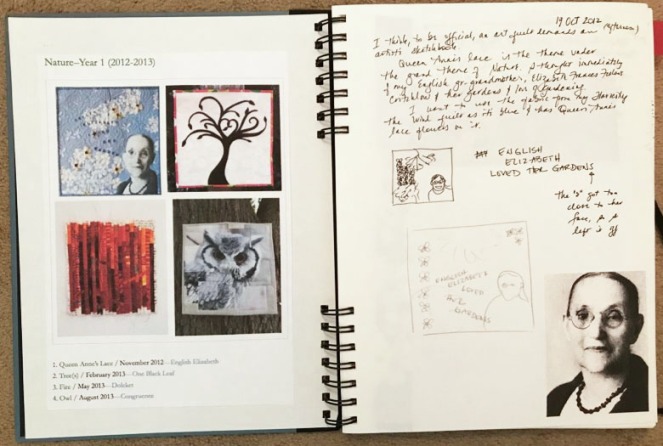



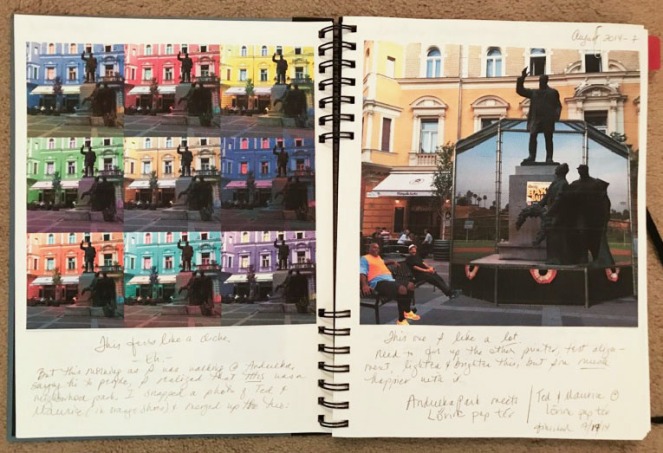
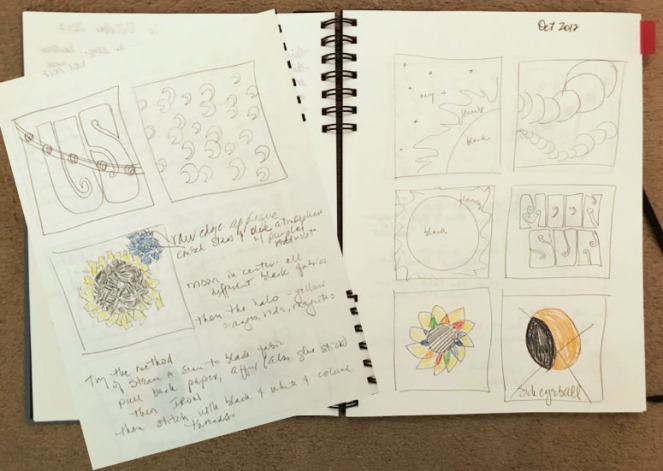



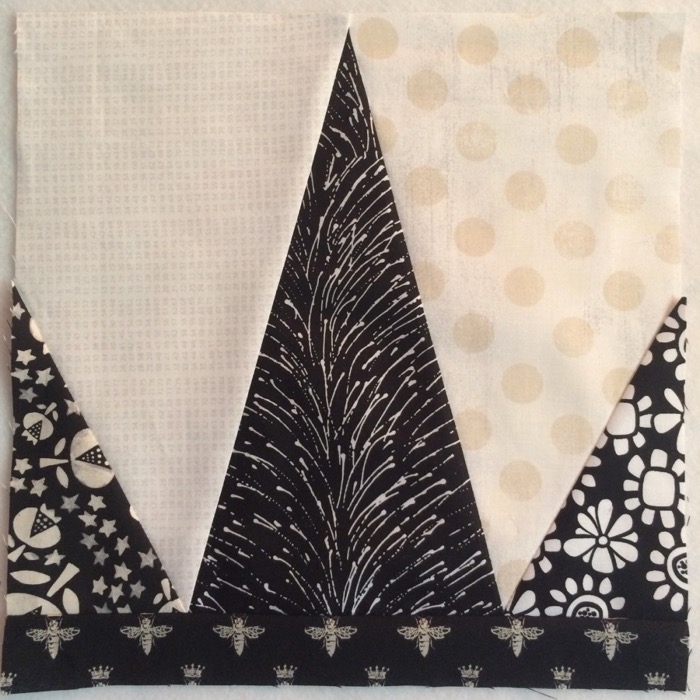
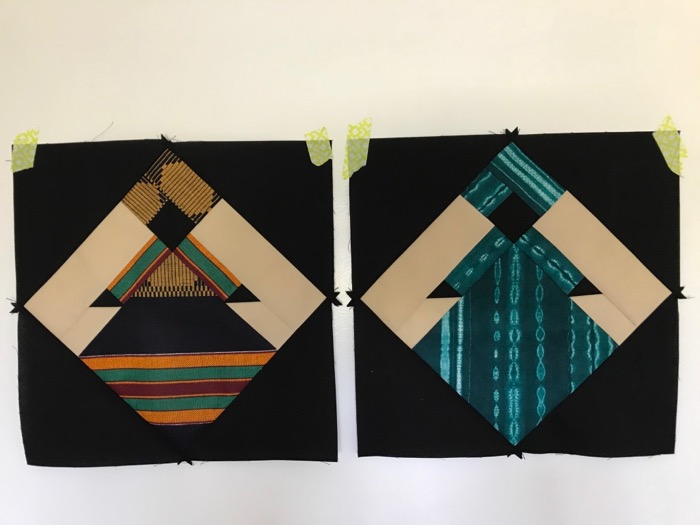 Leisa’s mother used to live in Ghana, a missionary for the LDS church. While she was there, she sent Leisa a box of fabrics that she’s turned into African Queen blocks. In case you want one, here’s the info on the pattern by
Leisa’s mother used to live in Ghana, a missionary for the LDS church. While she was there, she sent Leisa a box of fabrics that she’s turned into African Queen blocks. In case you want one, here’s the info on the pattern by 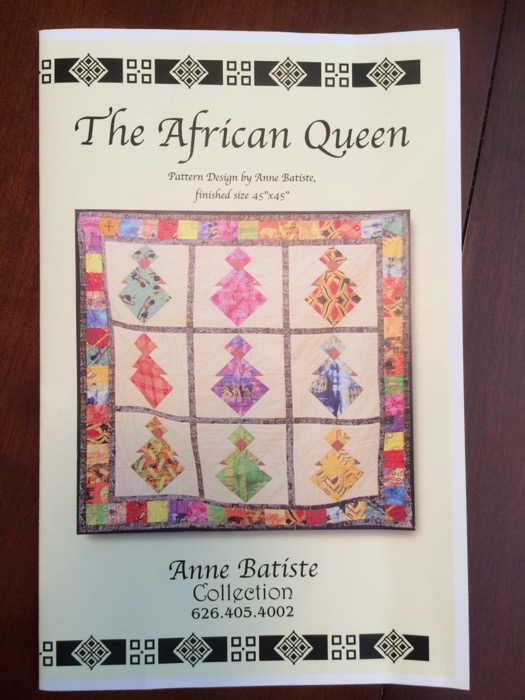


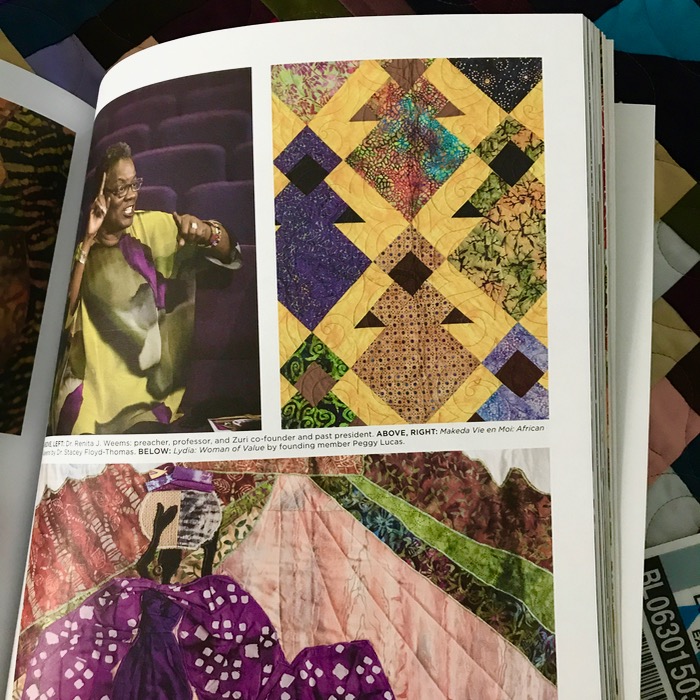 I have to admit, even though it’s a bit more than I’d usually pay for a single issue, I do enjoy this publication, as it generally focuses on the regular people of quilting, not the big Brand Names of Quilt Stardom. A nice change, which exposes me to a wider range of our quilt world (and lets me find an African Queen pattern!).
I have to admit, even though it’s a bit more than I’d usually pay for a single issue, I do enjoy this publication, as it generally focuses on the regular people of quilting, not the big Brand Names of Quilt Stardom. A nice change, which exposes me to a wider range of our quilt world (and lets me find an African Queen pattern!).